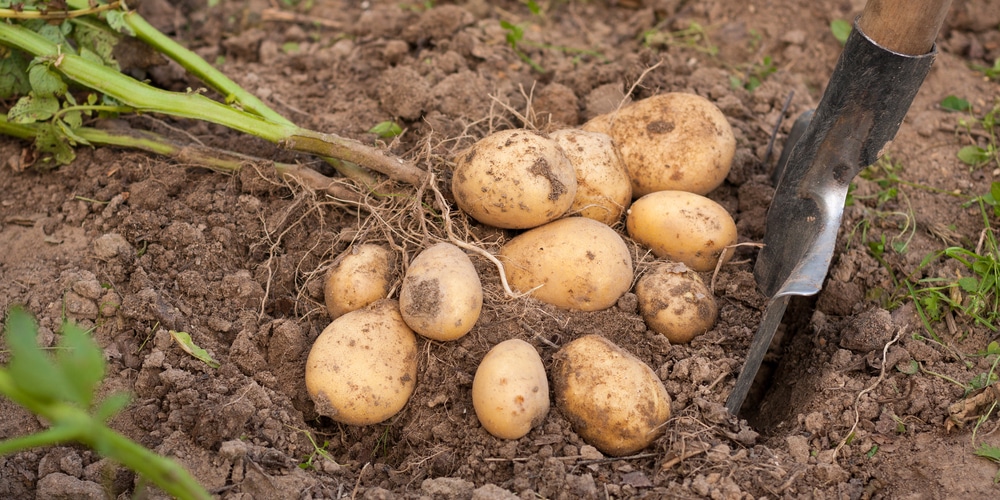Do you have a vegetable garden? Or do you like growing crops in your garden but don’t know where to start? Then, you should consider planting potatoes! Potatoes are easy to grow and there’s a lot you can cook with them. But, before that, you’ll need to learn how deep potatoes grow.
Indeed, these plants are root vegetables that need adequate space to produce harvests and get the nutrients they need to thrive.
And if you want to learn more on the subject, look no further! Keep reading this essential guide to understanding how deep you must plant potatoes.
How Deep Should You Plant Potatoes?
You can use potatoes in several ways, from fried to boiled and baked. No matter how you decide to consume them, these vegetables are delicious in any situation. And despite not being particularly challenging, you must get familiar with this versatile crop’s needs and requirements to allow it to thrive in your garden.
And to know how deep to plant potatoes is crucial to making them healthy. So, let’s go straight to the answer to the question. The truth is that you should place each potato seed at least 4 inches deep. Also, you must leave about 12 inches between potato plants. And if you are planting your crops in rows, measure at least 36 inches between each one.
Allow about 8 inches of loose soil below the surface to allow the tubers to grow. Additionally, you may have to build “hills” above your seeds to maximize their chances of thriving.
You might have to adapt the information we included in this essential guide to the potato variety you decide to plant in your yard. Indeed, some species might have different requirements you must take into account. Plus, if you are growing your crops in a container, remember to check it is the proper depth: it must be at least 24 inches to allow potatoes enough space to thrive!
All You Need to Know About Planting Potatoes
Despite not being as a glamorous vegetable as tomatoes or eggplants might be, the potato plant is a reliable crop that will provide you with a steady supply of versatile vegetables you can cook in several ways.
Because they are root vegetables, you must grow them in well-draining and loose soil (ensure you remove all the stones and dirt) to allow their roots to grow as long as they need to reach all the nutrients. The plant’s root might extend for as much as 18 inches below the ground, so there must be enough space.
Remember that potatoes will emerge from the soil as they grow. And if they do so too early, they will turn green. For this reason, you might be better off planting your seeds in “trenches” and gradually filling them with soil. Alternatively, hilling is a solution many gardeners like to use.
Despite sounding trivial, the truth is that how you plant your potato seeds will determine the success or failure you’ll have growing your crops. After all, the plant will grow vertically from where you plant the crop’s seed.
And the area between the seeds and the tubers contains shallow roots that determine the productive portion of your garden “bed.” So, you must know how to prepare the ground for your crops before planting them.
Planting Potato Seeds in Your Yard
Before you start, you must know that potatoes don’t like moisture. Indeed, too much water might cause fungal infections and result in shallow roots.
So, you’ll get poor harvests. So, if you know your substrate is compact, ensure you take measures to loosen it before adding potatoes to your garden. For instance, consider adding compost or manure to increase drainage and improve the soil’s nutrient content.
Of course, you can add some fertilizer to the mixture but avoid using products high in nitrogen. This element will encourage foliage growth at the expense of tubers.
We recommend you dig about 10 to 12 inches down the soil (and remove rocks and other roots you may find) to plant the veggies’ seeds. Also, plant them about four weeks before the last frost date. Don’t forget to check your local weather conditions before making any plants: there might be changes from the previous years!
Related Article: When to Harvest Potatoes

